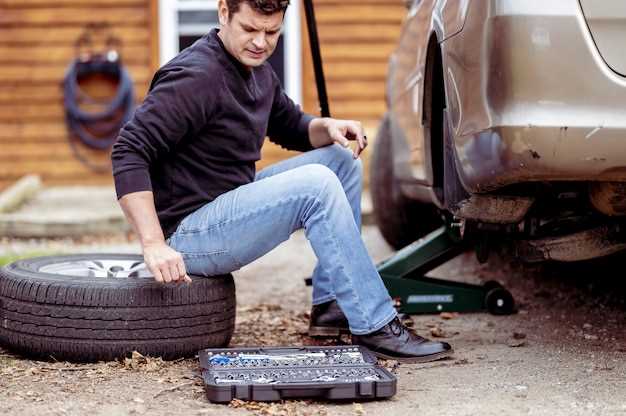
When it comes to maintaining the performance and safety of your BMW, addressing brake noise issues promptly is essential. Troubleshooting these sounds not only ensures a smoother driving experience but also prolongs the life of your braking system. BMW owners often encounter various types of brake noises, such as squeaking, grinding, or pulsating sounds, which can indicate underlying problems that need attention.
Understanding the source of brake noise can help you determine the necessary steps for resolution. Common issues may arise from worn brake pads, lack of lubrication, or even issues with the rotors. By tackling these concerns early on, you can prevent more severe damage and costly repairs down the line. This article will guide you through the most common BMW brake noise problems and offer practical solutions to help you keep your vehicle in top condition.
Identifying Common Sources of Brake Noise in BMW Vehicles

Brake noise in BMW vehicles can arise from several common sources. Understanding these can help in effective troubleshooting and ensuring optimal brake performance. One prevalent cause of noise is worn brake pads. As the material degrades, it can produce squeaks or grinding sounds during operation. It’s advisable to check the thickness of the pads regularly and replace them as necessary.
Another potential issue lies in the brake rotor condition. Warped or unevenly worn rotors can lead to vibrations and noise when the brakes are applied. Inspecting the rotors for signs of wear or damage and ensuring they are properly machined or replaced can mitigate these sounds.
Brake dust accumulation is also a common culprit. Excessive brake dust can lead to noise due to the debris between the pad and rotor surfaces. Regular cleaning of the braking components can help maintain quieter operation.
The use of inferior-quality brake components can contribute to excessive noise. Upgrading to high-quality materials can significantly improve performance and reduce sound emissions. Additionally, ensure that all hardware, including shims and clips, is in good condition and properly installed, as missing or damaged parts can exacerbate noise issues.
Finally, the environment surrounding the brakes can also impact noise levels. Moisture, dirt, and road debris can affect the braking system’s functionality and create unwanted sounds. Keeping the brake area clean and addressing any outside contaminants can help in maintaining quieter brakes.
Tools and Techniques for Diagnosing Brake Issues in BMW Models
When troubleshooting brake noise problems in BMW models, having the right tools and techniques is essential for effective diagnosis. Start with a basic tool kit that includes socket wrenches, screwdrivers, and a brake caliper tool to access and inspect brake components easily.
One of the first steps is a visual inspection of the brake pads and rotors. Look for uneven wear, scoring, or damage, which can indicate deeper issues. A flashlight can help illuminate hard-to-see areas. Utilizing a thickness gauge can provide precise measurements of the brake pads, ensuring they meet the manufacturer’s specifications.
Next, perform a road test to identify the specific conditions under which the noise occurs. Pay attention to whether the sound arises during braking, turning, or while driving at a certain speed. This information is vital for pinpointing the underlying problem, whether it be worn pads, warped rotors, or issues with calipers.
In addition to visual checks, using a brake diagnostic scanner can help identify any electronic issues, especially in newer BMW models equipped with advanced braking systems. These tools can read fault codes and provide insights into any potential electronic malfunctions affecting brake performance.
For more detailed troubleshooting, consider using a dial indicator to measure runout on the rotor surface. This measurement will help determine rotor flatness and reveal any imperfections that could be contributing to noise.
Moreover, listening techniques are crucial. Use a mechanic’s stethoscope to isolate noise sources while the vehicle is running. This can help determine if the noise is coming from the brake components or other areas of the vehicle.
In conclusion, effectively diagnosing brake issues in BMW models requires a combination of visual inspections, road tests, specialized tools, and careful listening techniques. Addressing these problems promptly can prevent further damage and ensure optimal braking performance.
Step-by-Step Guide to Resolving Brake Noise Issues in Your BMW

Experiencing brake noise in your BMW can be concerning and may indicate underlying issues that need to be addressed promptly. This step-by-step troubleshooting guide will help you identify and resolve brake noise problems effectively.
Step 1: Identify the Type of Noise
Begin by paying close attention to the noise your brakes are making. Common noises include squeaking, grinding, or clicking. Squeaking often results from worn brake pads, while grinding can indicate that the pads are excessively worn and need immediate replacement. Clicking might suggest loose components.
Step 2: Inspect Brake Components
Once you have identified the noise, perform a thorough inspection of the brake system. Check the brake pads for wear and tear, ensuring they meet the manufacturer’s specifications. Inspect the rotors for scoring or warping, as well as the calipers and hardware for any signs of damage.
Step 3: Check for Dust and Debris
Brake noise can also be caused by dust and debris accumulation. Clean the brake components using compressed air or a brake cleaner to remove any contaminants. Ensure that the brake surfaces are clean for optimal performance.
Step 4: Apply Anti-Squeal Lubricants
If squeaking persists after cleaning, consider applying anti-squeal grease on the back of the brake pads. This lubricant reduces friction and can help to eliminate noise. Make sure to use products specifically designed for brake systems.
Step 5: Replace Worn Parts
If your inspection reveals worn brake pads or damaged rotors, replacing them is imperative. Always opt for OEM (Original Equipment Manufacturer) parts to ensure compatibility and maintain the quality of your brake system.
Step 6: Verify Installation
After making any replacements or adjustments, double-check that all components are installed correctly and secured properly. Loose parts can lead to abnormal noises and compromise braking performance.
Step 7: Test Drive and Monitor
Once repairs are completed, take your BMW for a test drive. Pay attention to the brakes during various driving conditions. If the noise persists or if any new sounds arise, further investigation may be necessary, warranting professional assistance.
By following these steps for troubleshooting and resolving brake noise issues, you can help ensure your BMW operates smoothly and maintains optimal braking performance.



